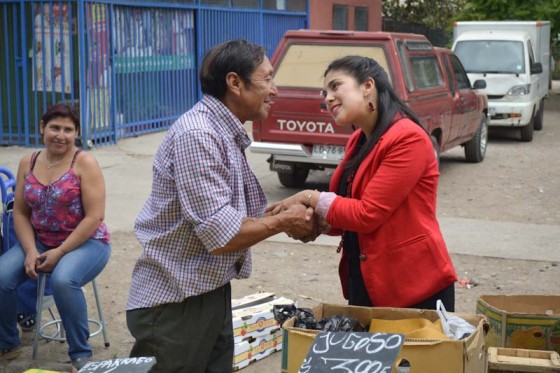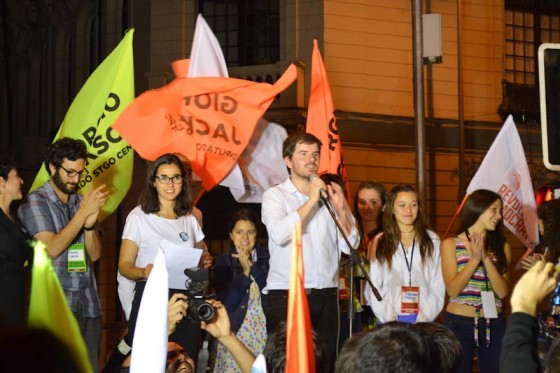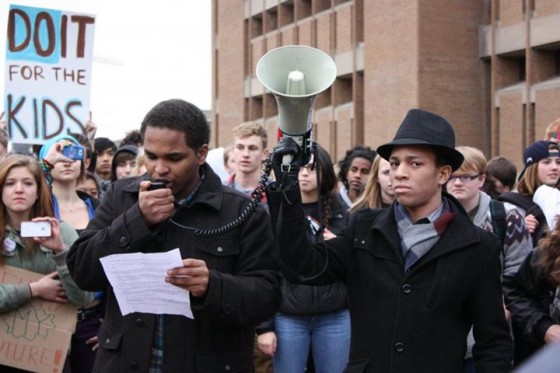Getting schooled by South American student activists
Students in Chile and Argentina are proving that meaningful education reform means taking over schools and getting young people into office.
Americans spend a lot of time fretting about how poorly our students perform compared to young people in other countries.
And we should. A recent knowledge and skills test ranked U.S. students 36th out of 65 countries surveyed, below places like Vietnam, China, and Poland.
So what are students to do with an education system that’s failing them?
In Chile and Argentina, two countries that scored even lower on the test, they’ve taken over schools, streets, and Congressional seats, demanding higher-quality public education.
Seattle students have taken some tentative steps toward similar activism. In fall 2011, five hundred Garfield High School students walked out of their classrooms to protest education budget cuts threatened by the state legislature. Then, pleased with the results, they organized a second walkout, this one city-wide.
“We called the ASB [Associated Student Body] officers from other schools and they all got on board and told their schools,” says eighteen-year-old Obadiah Terry, who helped organize the walkouts.
Terry says the walkouts were successful: Only weeks after the protest, the Washington State Supreme Court ruled the proposed budget cuts unconstitutional. But since then things have been pretty quiet. Local students have yet to form a sustained movement.
They might accomplish a lot more if they took a page from the students of the Southern Cone.
A walkout would be far too tame a protest for Argentine high school students. When they want to make their grievances heard, they’ve occupied their schools for days, weeks, or even (in the case of Buenos Aires’ technical schools last year), months at a time. They block entrances and shut down classes until politicians give way to their demands.
“Many students, rectors, and teachers say the occupations don’t accomplish anything,” says seventeen-year-old Paula Demarchi, who participated in Argentina’s 2010 school occupations and is currently student body president of the Roca High School. “But that’s not true. In 2010, we got the majority of the construction that we needed.”
School occupations are part of a long Argentine tradition of taking over factories, businesses, theaters, abandoned buildings, or really any building or institution that a group of activists decides needs to be preserved, changed, or recaptured for popular use.
Looking back on my own days as student at Lakeside, a private high school and middle school in North Seattle, I can’t imagine anything like a school occupation. My friends and I were politically active, but we participated in politics the way our parents and teachers did: writing to politicians, signing petitions, doorbelling for campaigns, or maybe marching in the streets.
It would never have occurred to us to take direct action.
Adult role models seem to play a key part in student activism. In early 2013, Garfield’s teachers refused to administer the MAP standardized test to their students. History teacher Jesse Hagopian says the test has nothing to do with what students learn in their classrooms, and administering the test means the school library is closed for weeks at a time.
But Garfield’s teachers couldn’t pull off a successful boycott alone, so they asked their students for help. When the school’s administrators tried to pull kids out of class to take the test, “hundreds … either refused to get out of their seats and go to the computer lab or went to the computer lab and just hit the ‘A’ key over and over again,” Hagopian says. “So the test was completed in thirty seconds and invalidated.”
Thanks to that coordination between teachers and students, the MAP test is no longer required at the high school level in the Seattle School District.
Nonetheless, after the walkouts and the boycott, student activism in Seattle has petered out.
“I personally kind of had to step back from it, because I was working on other things,” says Obadiah Terry, “and I think a lot of us had that same mentality.”
Jesse Hagopian talks about the successful MAP protest on Democracy Now.
So maybe what Seattle needs are some regularly-scheduled student meetings.
The members of Buenos Aires’ high school student governments get together every Saturday to decide “how to carry out a protest plan in order to defend their interests,” says Matías Mlotek, a member of the Movement of Protesting Students and a former student leader at the Buenos Aires National High School.
And, in Chile, the Student Federation (Confech), comprised of representatives from universities all over the country, meets every two weeks. The Confech originally came together to fight Augusto Pinochet’s dictatorship, and, in 2011 and 2012, it organized massive marches that shook the entire country. Those marches put student issues on the national political agenda, says former student leader René Andrade.
When students in Argentina and Chile can’t get what they want through protesting, they take their grievances to the ballot box. In October, sixteen- and seventeen-year-olds voted for the first time in Argentina.
Now, says Paula Demarchi, “students can pick up the phone, [call their representative], and say, ‘Look, the roof of my school is falling down,’ or ‘Look, this curricular reform is being introduced. Do something about it.’”
But Chilean students aren’t just calling their representatives. They’re grabbing the reins of power themselves. In November’s legislative elections, four former student leaders won seats in the Chilean Congress.
 Karol Cariola, one of Chile’s former student leaders and newly-elected members of Congress, meets with a constituent after the elections. (Photo by Eilís O’Neill)
Karol Cariola, one of Chile’s former student leaders and newly-elected members of Congress, meets with a constituent after the elections. (Photo by Eilís O’Neill)
“During the student movement, we found that many doors were closed to us,” says Karol Cariola, the former president of the student federation of the University of Concepción and the MP-elect for two of Santiago’s neighborhoods. “The National Congress was sealed, closed, unwilling, arrogant. Faced with this, we decided to look for a way to take over spaces of power.”
Can four delegates make the changes demanded by Chile’s students? Maybe, says René Andrade.
“It’s an important symbolic victory,” he says. But how much headway the new delegates make depends on how they work with Chile’s center-left coalition.
Student leaders in Seattle aren’t taking over schools or legislatures yet, but teacher Jesse Hagopian is nonetheless hopeful.
“These young people are going to begin to knit together the lessons of various struggles they’ve been a part of and build more sustained organizations to win long-term goals,” he predicts.




No hay comentarios:
Publicar un comentario